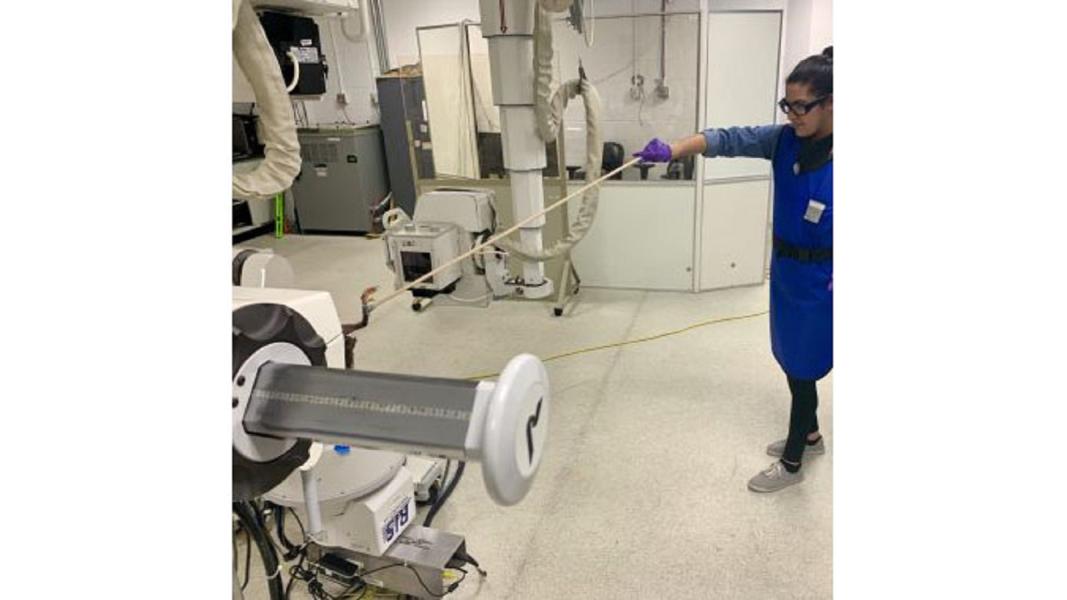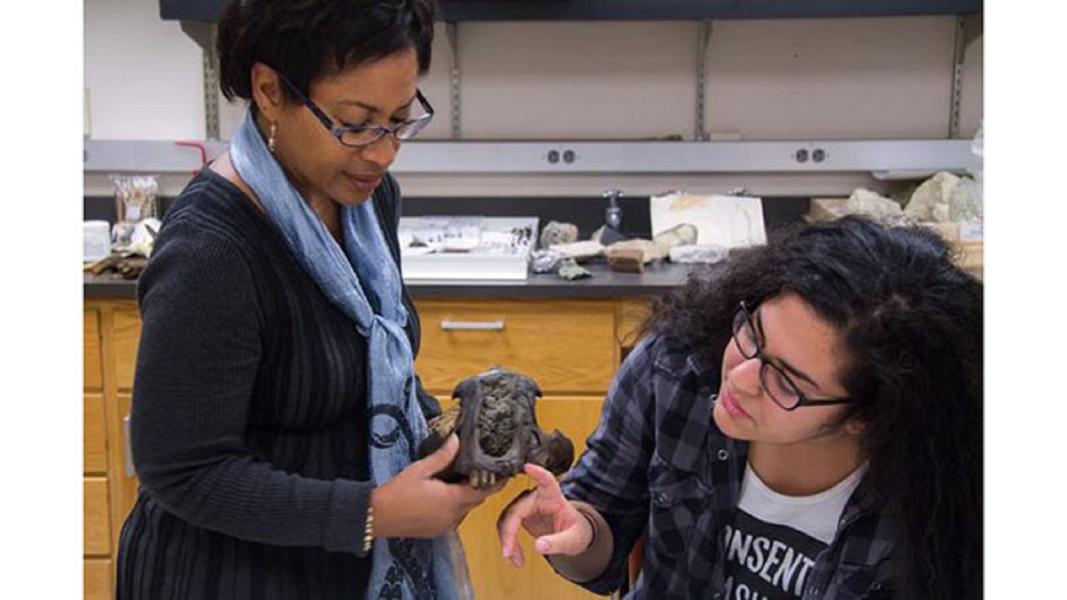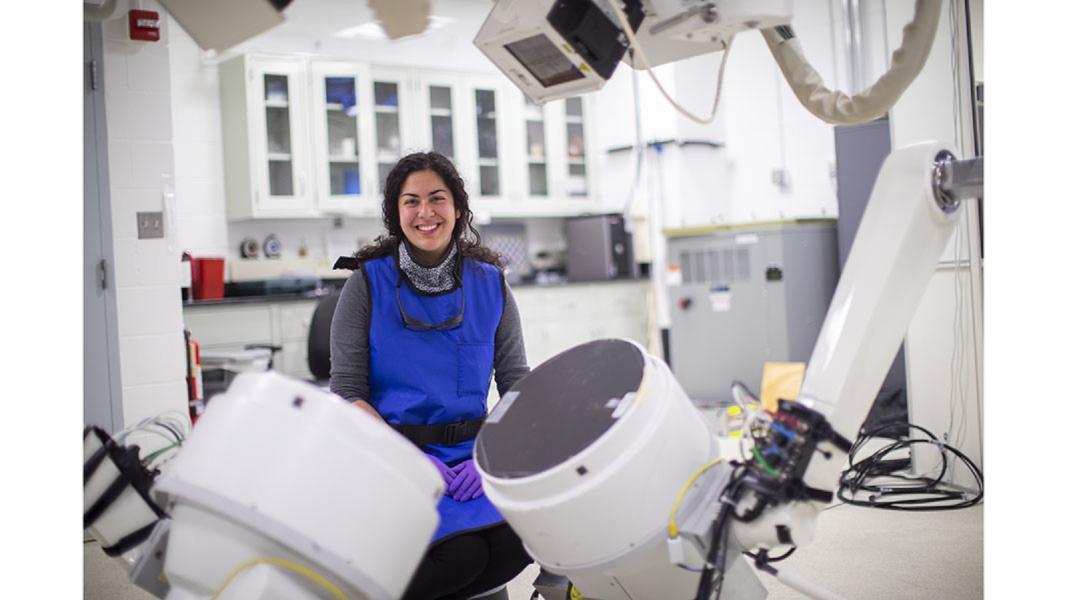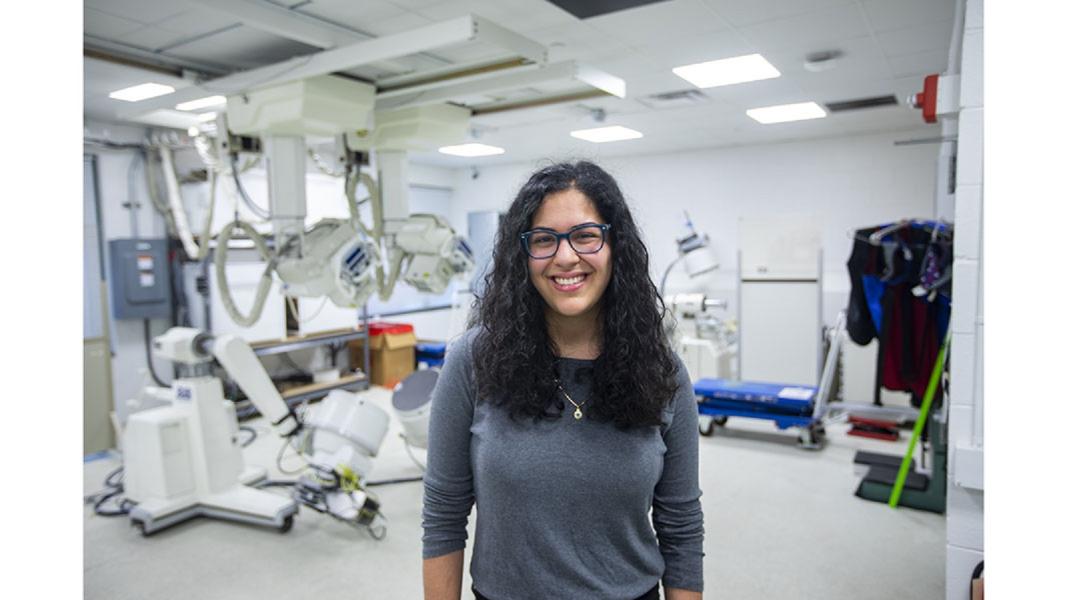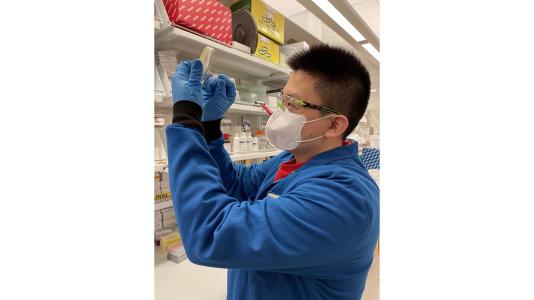
Since their initial meeting in a special program for high schoolers in 2012, two STEM-focused grad students have kept in touch. Kevin Zhao, studying chemistry and chemical biology at Harvard University, has focused his dissertation on improving genome editing technology. In contrast, Armita Manafzadeh, studying ecology and evolutionary biology at Brown University, is finishing up her doctorate on joint mobility. Despite their vastly different STEM paths, they remain friends due to a shared experience they remember fondly: being part of the high school ESRP at the U.S. Department of Energy’s (DOE) Argonne National Laboratory.
Both of them participated in the first year of the ESRP in 2012 while students at Neuqua Valley High School, and they attribute their current research interests to what they learned during that remarkable experience. “I think the big benefit of the ESRP was allowing me to see that there is a path for research,” said Zhao. “Before, I didn’t even consider a doctorate as a trajectory for my career, but now here I am, 10 years later, getting close to the end of my doctorate program, and I’m loving every part of it.”
“At the 10th anniversary, we’re finally starting to see some of these initial students come out of their doctorates. It’s going to be exciting to continue seeing this process repeat itself every 10 years, and hopefully drive more scientific thinking for the future.” — Kevin Zhao, 2012 ESRP alumnus
Argonne is celebrating its 10th year of engaging high school students in research through the ESRP program. “Having a research experience at an early age opens students’ eyes to all the possibilities within STEM, and to have individuals such as Kevin and Armita continue down the path of research validates the efforts we make to provide high schoolers with special STEM opportunities. We are very proud of all of our ESRP alumni and their STEM accomplishments,” said Argonne’s Educational Programs and Outreach manager Meridith Bruozas.
Each year, the ESRP runs throughout the course of the school year, with each high school’s team of students working with scientists and engineers at the lab to develop their own professional research objectives. For this research, the schools draw upon the lab’s state-of-the-art staff and infrastructure, as well as resources such as the beamlines at the Advanced Photon Source (APS), a DOE Office of Science User Facility.
“We give students access to some of the most advanced tools like the APS, so they can accomplish things they might never have imagined in high school,” explained Argonne’s learning lab instructor Kelly Sturner. “The students themselves come up with their own research questions with the guidance of their scientist mentors, so they know what it’s like to solve STEM problems in the real world.”
Indeed, Manafzadeh clearly recalls how she and the other students from Neuqua Valley stumbled during their research for the ESRP. For instance, they tried to synthesize and compare graphene produced under different conditions, only to end up with four identical samples of graphite. Rather than be frustrated, Manafzadeh appreciated the experience. “I learned so much from this failure that I wouldn’t have it any other way,” she said.
Zhao agreed, emphasizing that the hands-on trial and error in the ESRP helped him better understand the real-world challenges that professional STEM researchers face, as STEM fields often delve into questions where answers have yet to be discovered. “Research is this unique aspect where you’re trying to figure out something that no one previously has really thought about,” he said. “And it’s kind of exciting, to think about the possibilities and try to figure out what path you want to take to solve it.”
In high school, both students were interested in science but did not see any path forward except into medicine. With its research focus, the ESRP opened up entirely new perspectives and opportunities. “Participating in the ESRP is without a doubt the single most important factor that shaped my decision to pursue a career in scientific research,” Manafzadeh said. “Because of the ESRP, I hit the ground running in college and was very quickly able to join a research lab and continue developing research experience. Now I am in a doctorate program and get to keep on making new, incremental discoveries — and it hasn’t gotten any less exciting with time.”
Out of his family, Zhao is the first to have an interest in science, much less finish college, and he is proud to be on the verge of completing his doctorate. His current goals are very much driven by a continued passion for research, which the ESRP first sparked. “Really all of it comes down to me appreciating what research is and wanting to pursue it,” he said. “That’s why I continued on to my doctorate here. I think research will forever be a part of me, now and into the future.”
Already a National Science Foundation Graduate Fellow, Manafzadeh is looking into postdoctoral fellowships, with the goal of becoming a professor. “I look forward to continuing to develop my own research projects — but also to being able to mentor and train the next generation of scientists,” she said. “I am passionate about exposing students to how science really works, to show them that it’s so much more than the scientific method we learned in grade school — and that passion definitely began with my own experiences in the ESRP.”
Over the years since the ESRP began in 2012, it has continued to create critical STEM pathways for more and more students, starting out with just two participating schools and now hosting over a dozen schools in 2020. After everything that the program has done for him, Zhao is glad that ESRP remains a key program at Argonne after 10 years.
“I think we should celebrate a lot of the young scientists that will come about from the ESRP,” Zhao said. “At the 10th anniversary, we’re finally starting to see some of these initial students come out of their doctorates. It’s going to be exciting to continue seeing this process repeat itself every 10 years, and hopefully drive more scientific thinking for the future.”
Argonne National Laboratory seeks solutions to pressing national problems in science and technology. The nation’s first national laboratory, Argonne conducts leading-edge basic and applied scientific research in virtually every scientific discipline. Argonne researchers work closely with researchers from hundreds of companies, universities, and federal, state and municipal agencies to help them solve their specific problems, advance America’s scientific leadership and prepare the nation for a better future. With employees from more than 60 nations, Argonne is managed by UChicago Argonne, LLC for the U.S. Department of Energy’s Office of Science.
The U.S. Department of Energy’s Office of Science is the single largest supporter of basic research in the physical sciences in the United States and is working to address some of the most pressing challenges of our time. For more information, visit https://energy.gov/science.
Image Gallery
